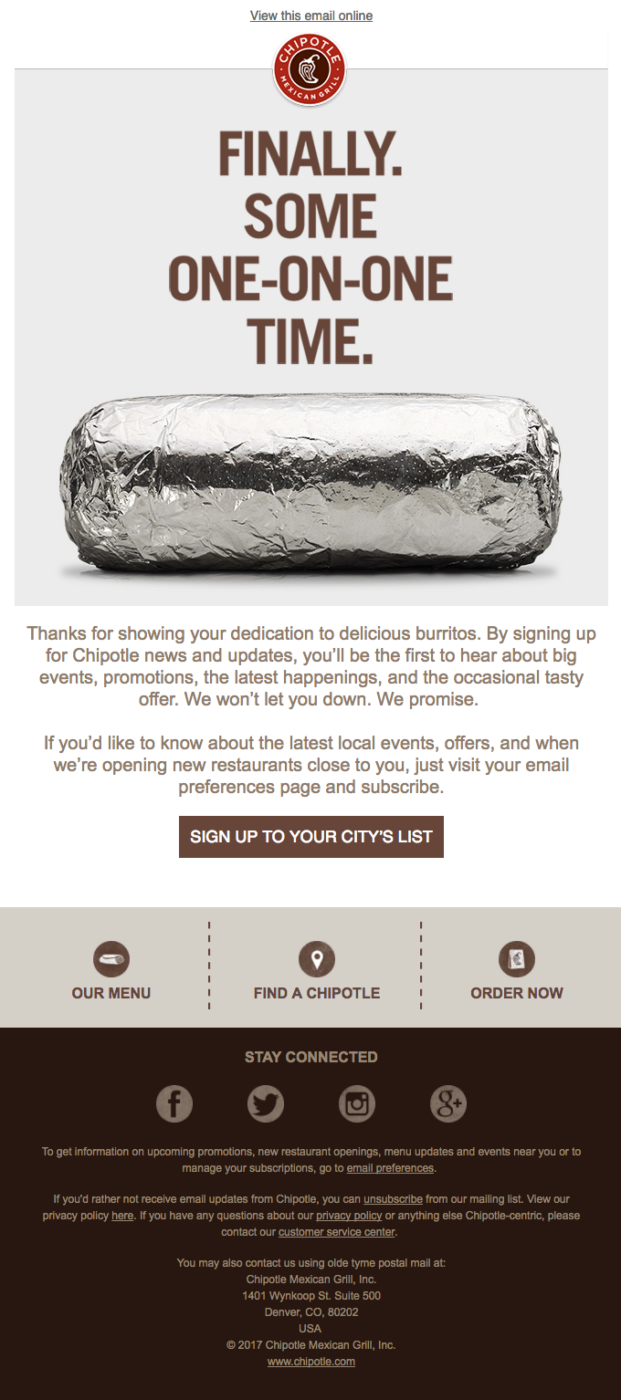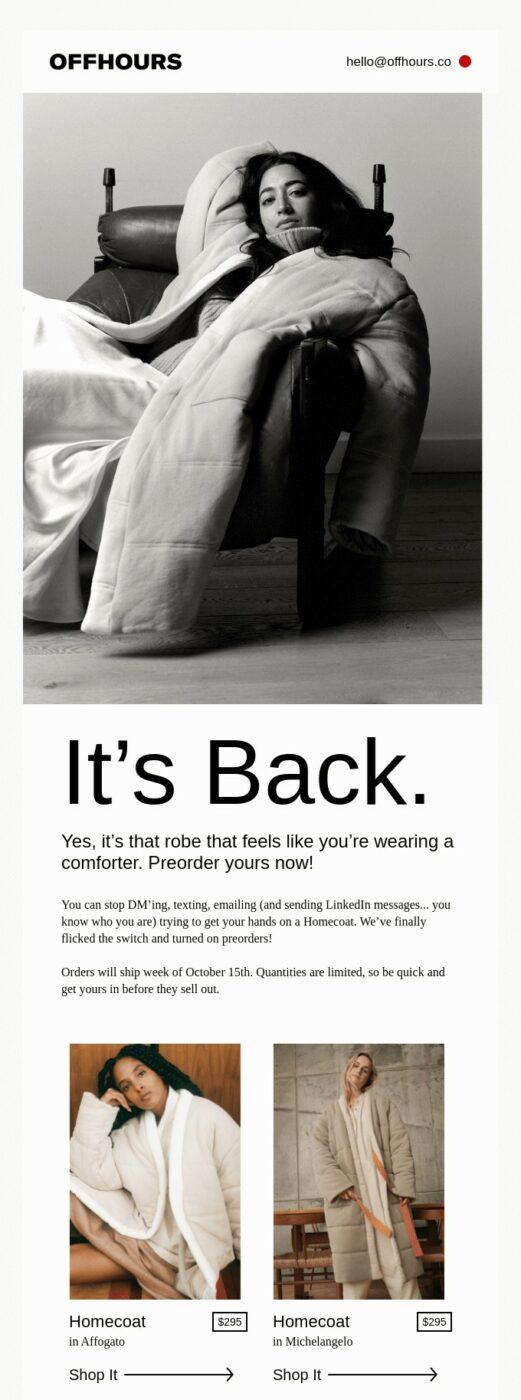


Skirmantas Venckus is a writer by day and reader by night and the CMO at Sender.net—the email marketing provider that is focused on user-friendliness, affordability, and utility.
The eCommerce marketing landscape is constantly changing, and it’s difficult to keep up with the pace.
As an eCommerce marketer, you’re probably challenged by the fact that your job never ends. Every day brings new challenges and obstacles to overcome, especially when dealing with repetitive non-creative tasks like scheduling bulk emails or sending personalized messages to new subscribers.
Well, guess what? You don’t have to approach eCommerce marketing from a non-creative viewpoint. You can automate a few processes and take a chunk of work off your plate. Wondering how?
Throughout this article, you will learn what email marketing automation is, how it works, examples to assist you, and tips on how to succeed using it.
What is email automation?
Email automation is a self-regulating workflow that helps marketers automatically send timely, personalized, and relevant emails to subscribers. Using an automated workflow allows you to meet subscribers at the right place, with the correct information, at the right time.
An automated email workflow works with triggers—that’s why they’re also called triggered emails. A trigger is an action or behavior that begins automation. Your trigger could be a form submission, app interaction, buying threshold, etc.
Ecommerce marketers value automated emails because it allows them to send highly personalized emails to subscribers without putting in extra time.

Benefits of automated emails
- Email workflow automation pioneer’s a timely, personalized, and hyper-relevant email marketing campaign
- Automated behavioral emails and drip campaigns, based on users’ interaction with previously sent emails, can help customers feel satisfied with your service
- Well-drafted automated email marketing campaigns, a sequence of lead nurturing emails, drive sales from potential and existing customers
- Automated trigger emails are sent after a predefined user action and can help eCommerce marketers take repetitive tasks off their to-do list and grow their business speedily
- Automated informational emails or newsletters can help position your brand as a thought leader and build credibility amongst prospects and consumers
Overall, email workflow automation helps eCommerce leaders schedule targeted messages with triggers to make consumers take or complete the desired action.
How email automation works
Automated emails work with triggers. For example, if you want to get cart abandoners back to buying ways, you need to highlight the exact point of their buying journey you intend to meet them.
Do you want your automated emails to nudge consumers who stopped loading their cart halfway to do otherwise? Or would you like to use incentives to get customers that stopped at checkout to go back and complete their purchase?
Create a workflow and set triggers when you know the exact point you want your emails to meet them. Since we’re running with ‘abandoned cart emails,’ you can set time-bound triggers maybe 6 to 24 hours after cart abandonment. This way, your email gets to meet abandoners, with an incentive or a gentle nudge, just when they need it.
Bonus: Email Alternatives!
Creating an email workflow
Be sure to use customizable templates and engaging language. To save time, we recommend trying the omnichannel Sender for the most catchy and aesthetic email templates. Using this affordable yet high-quality tool you will be able to choose from a wide variety of eye-catching email templates or create one yourself!

Setting a trigger
Use email automation software to set conditions that automatically trigger your campaign. Highlight a set of actions or behaviors that consumers need to take to trigger the campaign. For example, for automated welcome emails, your trigger could be a form submission from new subscribers.
Scheduling your email series
Automated emails allow you to automatically send one-off emails or special offers to a segment of your list without the stress or hassle of manual scheduling.
7 Use case examples of email automation
Suppose you’ve ever looked at a model phone while shopping (the slick design, intuitive interface, and ever-changing display), you know that the model is an example, a pattern that shows an ideal state.
Let’s take a look at a handful of ‘model phones’ from the world of email automation.
1. Welcome emails
Everyone loves a warm welcome, especially when visiting an eCommerce store bound to attract unplanned expenses.
Automated welcome emails greeting new subscribers and showing them around your store set the tone right for further interaction.
Keep your welcome email short, simple, and sincere. Your prospect should not feel overwhelmed or underappreciated on your first contact.
Use a line as simple as ‘welcome to our email list’ or ‘thank you for signing up to receive our emails’ and a short description of your store in a polished, elegant frame.
For context, take a look at how Chipotle welcomes its customers to delicious burritos—with a promise that they won’t let consumers down.

2. Promotional emails
The average consumer has to deal with over 50+ promotional emails every day. So as interesting as promotional email workflow sounds, you might experience a hard time convincing buyers without a well-thought-out automated series.
There’s no fool-proof strategy to promotional email marketing. Best bet: personalize your promotional emails, segment your list, and set strong triggers.
Don’t dive into the world of automated promotional emails because your competitors claim to profit from it—do your research highlighting what works and what doesn’t; that’s the only way to keep your messages relevant.
Use this Design Modo’s automated promotional email as a case study. Discounted prices, appealing graphics, and an urgent state make it more likely that the user will convert.

Another great example of a high-converting promotional email is from Aura, an all-in-one digital safety solution for the whole family. This email is one from the automated sequence they send to those who reached the checkout page but didn’t convert. As you can see, the key focus in this email is on protecting the child from identity theft.

3. Cart abandonment emails
How often do you abandon online carts?
Because realistically, we can unanimously agree that we’re all guilty parties here. However, we all know that cart abandonment doesn’t necessarily mean we don’t intend to purchase later.
Sometimes, the right incentive and a gentle nudge are all we need.
Automated cart abandonment emails can help you ‘go gentle’ with customers, get bounced visitors to the checkout flow, and make prospects think of doing business with you again.
But like always, only an engaging cart abandonment email campaign backed by incentives and a strong email marketing strategy can do the magic.
Watch how Rudy’s barbershop does the trick with free shipping.

4. Post-purchase feedback emails
Everyone knows that eCommerce stores thrive better with repeat buyers or loyal customers.
But with fierce competition and ever-evolving industry, how do you make consumers want to do business with you over and over again?
Well, post-purchase feedback emails won’t create repeat customers, but they can help you streamline the process.
Automated post-purchase feedback emails can help you highlight customer behavior and their buying experience, pinpointing what caused friction and what made the buying decision easy.
Feedback emails allow you to note grievances and complaints while leaving room for client-winning reviews and client testimonials.
It’s Withings on this one.

5. Stock replenishment emails
Most eCommerce products have a ‘shelf life.’
How long do you think customers would use your product before they need to restock?
Estimating and knowing your product’s shelf life can help you set accurate triggers for email workflow automation.
A series of well-automated stock-replenishment emails helps consumers make decisive actions and creates space for repeat buyers.
Use stock replenishment emails to share exciting offers and incentives. Set triggers to tell existing customers that you’re back in stock. And when feasible, share product recommendations.
Need an example? Here goes OFF HOURS with The Homecoat’s back.

6. Re-engagement emails
It’s time to re-enlighten overwhelmed users and get existing customers to take action.
Automating re-engagement workflows allows you to properly introduce a new feature or benefit, giving inactive subscribers a reason to wander and explore.
Though, while most marketers say re-engagement emails are best served with a dose of FOMO (fear of missing out), we say design your re-engagement workflow following what’s best for you and your customers.
Wondering how? Take a look at Moment’s re-engagement email.

7. Occasion-based emails
What are you celebrating? Anniversary, a get-together, or an end-of-the-year party?
Or better still, what’s the world celebrating? Christmas, Easter, Valentine, Ramadan, or… whatever it is!
For occasion-based workflow emails, use a particular celebration as a point of contact and show customers that you care and value your relationship.
It’s a sure-fire way to extend your greetings in a season of love, making consumers know that you exist to serve them better.
And while it’s okay to create a series of occasion-based emails about sales, the best occasion-based email workflows reiterate the beauty of the season with no hidden motives.
An example of an automated occasion-based email from Wildist.

7 Tips for email automation success
Email automation supports an automatic workflow where personalized messages are placed in front of the right customers at the right time. Sounds complex?
Below are tips to help you maximize the power of email campaigns, automate workflows, draft a trust-building email marketing strategy, and win new clients.
1. Build your list
Your list is your powerhouse.
You can build a sustainable list with a lead capture form. Lead capture forms are questionnaires or forms on your website that you can use to collect consumer information and heighten your marketing efforts.
Highlight a free offer you know consumers would love to have. Make it helpful and non-intrusive and share it in return for their emails.
Ensure your offer resonates deeply with your target audience; you don’t want a random email taking up space on your list.
2. Keep your messaging swift, clear, and simple
Once you’ve successfully built a list, it’s time to draft your message.
Email workflow automation allows you to send out personalized messages to countless consumers. You can add your customer’s name, location, and a few other variables.
When drafting your message, avoid stereotypical words. Try to show your consumers that someone took out time to draft this mail, and it’s in no way generic.
Highlight the basic pain point, feature, or benefit you wish to sell in your heading and subject line; ensure every word reflects your customers’ journey.
Swift, simple, and clear messaging intuitively builds trust and makes consumers excited about doing business with you.
3. Set measurable time-bound triggers
Automated emails revolve around time-bound triggers.
For email workflow automation to work, you must set measurable time-bound triggers that accurately reflect the flow of your messaging.
For instance, let’s say you want to send out cart abandonment emails. Set your email trigger to three to five days of cart abandonment, depending on customer engagement within that time.
With time-bound triggers, you’ve got an unwavering assurance that your automated email series will send the right message to the right person at the right time.
4. Work with a content plan
If you dived into email workflow automation without first setting a goal or detailing your plans, it’s not too late to start.
A well-drafted content plan brings to mind the probable opportunities and downsides of email automation. Don’t sit it out.
Take your time to draft a content plan. Jot the things you want to achieve, set measurable objectives and work with an email marketing strategy.
Also, don’t forget to weigh your budget and make adjustments accordingly as you create your content plan.
5. Don’t overthink fancy features
It’s easy to get carried away by fancy templates and slick designs when automating email workflows.
Please don’t feel guilty; it happens to the best eCommerce marketers, but that doesn’t mean you should let it stay that way.
Indeed, a beautiful template will make your automated email campaign spackle and hopefully, attract more engagement.
However, since we can unanimously agree that time is of the essence in email marketing, don’t be too picky—be swift with your design decisions.
6. Don’t forget to include an opt-out button
Regardless of the detail, care, and precision you put into list building, not everyone on your list would appreciate your emails.
And hey, there is nothing wrong with that—after all, there will always be a few people who aren’t interested in your offer, product, or services, and that’s okay.
Just try to do this expected set of unfriendly subscribers the favor of including an opt-out button in your emails.
An opt-out button also ensures your automated emails don’t land in spam folders.
7. Automate, analyze, and test
As you might have guessed, there is no fool-proof strategy for email workflow automation.
Your best bet at success is to keep on automating, analyzing workflows, and testing.
You can follow the blueprints of brands with formidable track records, or better still, hire a skilled email marketer to execute your email campaigns.
Manage your work and emails in the same place
At this point, it’s clear you have all the information you need to set up an automated email workflow. Before we wrap it up, we’ve got something for you… ClickUp. 🚀
ClickUp is a project management tool that offers an email feature that allows you to create tasks from emails, set up automation, attach emails to any task, and connect with everyone else you can’t reach within your slack workspace.
With ClickUp, you can seamlessly keep track of what’s happening or what was said within an email thread while managing relevant work in the same tab.

Grow your business while spending less
Email workflow automation helps you to grow your business strategically, turn new visitors to repeat buyers, build confidence, and attract superfans–without sacrificing that special personal touch.
However, getting sellers to trust you can sometimes feel like forever. And since ‘forever’ is not feasible, you need to be swift with your marketing efforts.
And that’s why we recommend you streamline your workflow with email automation software that helps you grow your business while spending much less.


